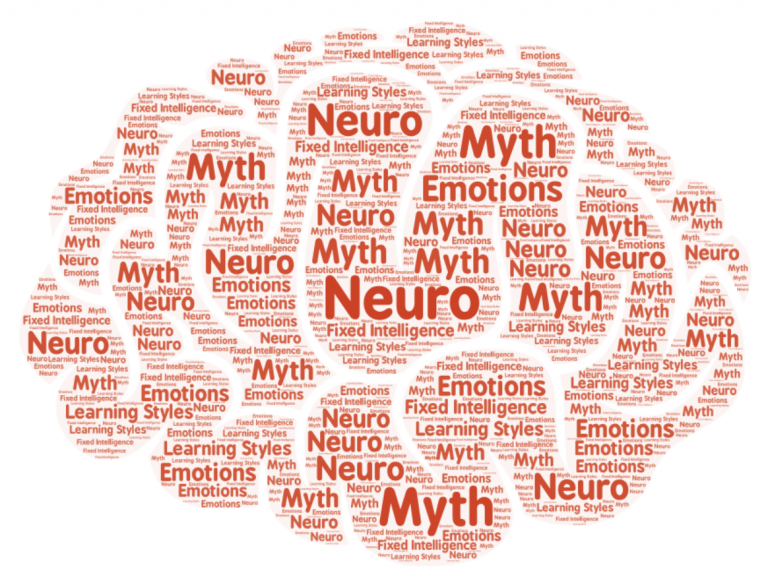BLOG POST #1
How is the concept of Neuromyths relevant in a class about online and multimedia learning?

The concept of Neuromyths means that the widely recognized division of the left brain and the right brain is, in fact, untenable.
Traditionally, it’s believed that the left brain is responsible for one’s logical and analytical thinking while the right brain is in charge of the emotional and intuitive reactions. Besides, the different functions of the two parts of the brain determines varied thinking approaches and information processing preferences. For example, one whose left-brain dominates is inclined to learn through verbal instructions while one with a better-developed right-brain may prefer visual signals. (Neuromyth 6 – OECD)
Under the influence of such a conventional notion, people may gradually label themselves with one certain hemisphere, which, in turn, further affects their learning habits and thinking ways. Take myself as an example, after I have encountered difficulties in learning physics and geography, I willingly let myself fall into the category of the right-brain. Ever since I deliberately avoid absorbing information through complicated logical speculation but turn to succinct explanation or clear visual stimulation. The division of the two parts of the brain may enable people to be limited to monotonous learning channel and rigid thinking way.
When it comes to online learning, the two-hemisphere theory may let students be indulgent in some certain information form. Online learning makes it more difficult for teachers to proceed synchronous communication with students. Thus teachers have to provide learning materials to encourage students to learn by themselves. In this context, the selection of learning materials matters, directly affecting how the students will be engaged in the learning process. To stimulate the interests of students and inspire students to explore, teachers generally provide a combination of different forms of materials, including research papers, videos, PowerPoints, and etc. In this context, those students who label themselves as right-brain may turn to videos and PowerPoints to get the gist of the knowledge instead of having a close reading of the long reading texts. Because of the single information channel, these students may have trouble acquiring a comprehensive understanding of knowledge. Besides, although images in PowerPoints and videos are so direct and succinct that students can easily understand the learning content, it also makes it harder for them to think independently and deeply and inspire their creativity. By contrast, papers and texts are indirect information which allow students to have various interpretations.
This phenomenon is most obvious when it comes to how people today choose their learning tools. According to the survey about the most popular tools for learning, YouTube and zoom top the list and word ranks the sixth, meaning that nowadays more and more people choose to learn by videos instead of texts. (Top Tools for Learning 2020 – Results of the 14th Annual Survey Published 1 September 2020, n.d.) Among the possible reasons is that people regard images and videos the more suitable and effective way for their learning, which may , to some extent, be influenced by the two-hemisphere theory. It seems an overwhelming trend for all knowledge to be turned into more easily received forms. You can get the content and main idea of a classic simply by watching a video lasting for several minutes. You can learn a profound and obscure discipline by watching dozens of crash course videos. Knowledge is no longer something enshrined, requiring efforts and perseverance. Knowledge turns into a commercial good which can only survive in the market by suiting the biological preference of human beings.
Once the myth is dismissed, it’s no longer justified for people to label themselves as a certain type of learner and shut out various information channels. As a matter of fact, some researches back up that the functions of the two hemispheres can not be completely separated and for most of the cases, they work in parallel. From this perspective, whatever the forms of the information, they can activate the two parts of our brain and engage us in the learning process. The concept of Neuromyths actually shatters people’s cognitive limitations and spurred people to reconsider their learning preferences. Students should embrace all kinds of learning materials, whether they come in obscure and silent texts or attractive and direct images. And this is how neuromyths can help shape the class about online and multimedia learning.
References
Neuromyth 6 – OECD. Organisation for Economic Co-Operation and Development. https://www.oecd.org/education/ceri/neuromyth6.htm
Top Tools for Learning 2020 – Results of the 14th Annual Survey published 1 September 2020. https://www.toptools4learning.com/
Recent Comments